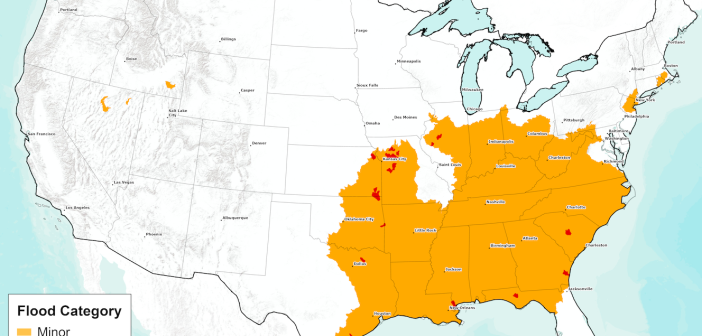Here is NOAA’s new weather forecast for the spring:
Forecasters at NOAA’s Climate Prediction Center — a division of the National Weather Service — predict above-average temperatures for most of the Continental U.S. and Alaska, as part of NOAA’s Spring Outlook released today for April through June.
Meanwhile, NOAA’s National Water Center predicts a lower-than-average flood risk across the entire country, due in part to historically low winter snow cover across the Upper Great Plains and western U.S.
“Climate change is affecting the timing, intensity and duration of weather events in the United States,” said NOAA Administrator Rick Spinrad, Ph.D. “ The Spring Outlook is one of the many tools NOAA provides to help communities prepare for what’s ahead.”
For April through June, above-average temperatures are likely to persist across much of the U.S. The greatest chance for above-average temperatures is in the Great Lakes region, the Pacific Northwest and Northwest Alaska, though most of the continental U.S. and Alaska have elevated odds of above-average temperatures.
Precipitation is slightly favored to be above average in portions of the central Plains, the southeastern U.S. and in southern Alaska. Parts of the Pacific Northwest and Southwest, meanwhile, are most likely to see precipitation below the seasonal average.
Moderate to exceptional drought conditions currently exist across less than 20% of the U.S. and Puerto Rico, a marked improvement from last year, as El Nino-fueled rain fell this winter across the Gulf Coast region. Drought conditions are likely to continue improving in the southeastern U.S.; however, the drought is likely to persist or even expand through portions of the Rocky Mountains and the Great Plains.
There is an 83% probability that ENSO Neutral conditions, neither El Nino nor La Nina, will return by the April-May-June 2024 timeframe. However, El Nino is expected to continue impacting weather patterns in the U.S. into the spring. A La Nina Watch issued by the Climate Prediction Center remains in effect — meaning La Nina conditions could return to the equatorial Pacific within six months.
“Our scientists at the Climate Prediction Center observed one of the strongest El Nino events on record during the winter of 2023-2024,” said Jon Gottschalck, chief of the Operational Prediction Branch from NOAA’s Climate Prediction Center. “But a quick transition to La Nina — the cool phase of ENSO — is possible as early as the first part of summer.”
Read more: https://www.noaa.gov/news-release/spring-outlook-warmer-for-most-of-us-wetter-in-southe




